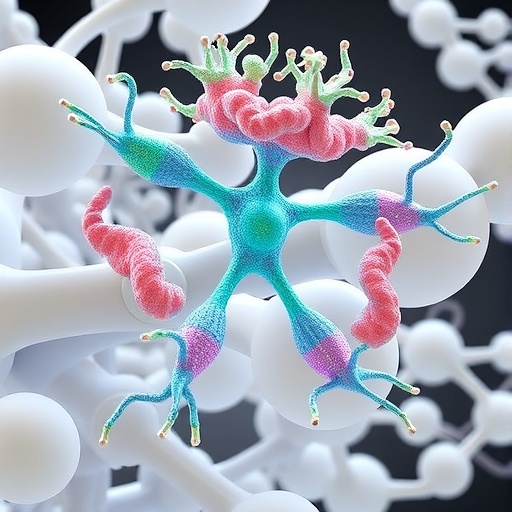Adenomyosis is a complex and often debilitating gynecological condition that affects millions of women worldwide, yet remains poorly understood in terms of its pathogenesis and therapeutic interventions. Characterized by the invasion of endometrial tissue into the myometrium—the muscular layer of the uterus—adenomyosis leads to uterine enlargement, irregular menstruation, secondary dysmenorrhea, and impaired fertility. Despite its significant prevalence, estimated to impact approximately 20 to 35 percent of women of reproductive age, progress toward effective treatments has been hindered by the absence of physiologically relevant and reliable in vitro models that accurately mirror the human disease state. This gap has left scientists with limited tools to dissect the molecular and cellular mechanisms underpinning adenomyosis and to explore potential pharmacological therapies.
A recent breakthrough led by Professor Xuan Che from the Affiliated Women and Children’s Hospital of Jiaxing University, in collaboration with Professor Shaorong Gao’s group at Tongji University, marks a significant advancement in adenomyosis research. Their work, published in Science China Life Sciences under the title “Decoding adenomyosis pathogenesis using an assembloid model,” presents an innovative bioengineered platform that recapitulates the intricate architecture and cellular interactions characteristic of adenomyotic lesions. The research utilizes cutting-edge organoid technology to build a three-dimensional (3D) assembloid system integrating various primary endometrial cell types, which unveils previously obscured features of the disease and opens new avenues for therapeutic discovery.
This novel assembloid model was engineered by co-culturing primary endometrial organoids, stromal cells, and uterine smooth muscle cells in a controlled in vitro environment. The resultant tissue-like constructs exhibit key physiological hallmarks of native endometrium and adenomyotic lesions, including hormone responsiveness and cellular heterogeneity. The ability to mimic in vivo conditions with high fidelity was confirmed through single-cell transcriptomic profiling, a powerful tool that maps gene expression patterns at the individual cell level. This approach demonstrated that epithelial and stromal compartments within the assembloids closely resemble their corresponding in vivo counterparts, substantiating the model’s validity and its potential utility in future studies.
A crucial insight obtained from comparing assembloids derived from normal eutopic endometrium with those originating from adenomyotic lesions highlighted the distinctive cellular and molecular changes associated with the disease. During the secretory-like phase—a hormonal milieu mimicking the post-ovulatory state—epithelial cells isolated from lesion-derived assembloids exhibited an enhanced proliferative index, suggestive of abnormal cell cycle regulation. Moreover, expression of luminal epithelial markers was significantly upregulated, whereas glandular epithelial signatures were reduced, indicating a shift in epithelial cell identity and function that may disturb tissue homeostasis.
Further examination of stromal cells provided compelling evidence of their heterogeneity in adenomyosis pathology. The researchers observed an increase in a unique CRYAB⁺IL15⁺ stromal cell subpopulation within lesion-derived assembloids during the secretory-like phase. CRYAB (alpha B-crystallin) is a small heat shock protein implicated in cellular protection and stress responses, while IL15 (interleukin-15) plays a critical role in immune modulation. Conversely, the BMP4⁺ stromal subpopulation, associated with bone morphogenetic protein signaling implicated in tissue differentiation and repair, was consistently diminished. This altered balance of stromal cell subsets suggests dysregulated paracrine communication within the uterine microenvironment.
Of particular importance is the disruption of the BMP/WNT signaling axis revealed by the study. BMP (bone morphogenetic protein) and WNT pathways are fundamental in regulating cellular proliferation, differentiation, and tissue remodeling. The imbalance observed in the assembloids hints at a mechanistic basis whereby aberrant stromal cell composition could perturb these pathways, leading to downstream transcriptional reprogramming of epithelial cells. The resulting dysregulation may contribute to the pathological features of adenomyosis, such as ectopic tissue growth and chronic inflammation.
Moreover, the assembloid system demonstrated heightened immune and angiogenic activity within lesion-derived constructs, aligning with clinical observations of adenomyotic lesions exhibiting inflammation and increased vascularization. These findings underscore the multifaceted nature of adenomyosis, involving not only abnormal cellular proliferation but also a dynamic interplay of immune responses and neovascularization, which could exacerbate disease progression and symptom severity.
This research offers a significant leap forward in adenomyosis modeling by providing a robust, reproducible platform that faithfully mirrors patient-derived tissue characteristics. The assembloid model transcends previous limitations posed by two-dimensional cultures or animal models, which often fail to capture the complex cell-cell and cell-matrix interactions of human disease. Consequently, this system will facilitate mechanistic investigations into adenomyosis pathogenesis, unraveling cellular cross-talk and identifying novel molecular targets.
Critically, the model holds immense promise for accelerating preclinical therapeutic discovery. By enabling high-throughput drug screening and functional testing in a context that closely mimics human adenomyosis, the assembloid platform paves the way for identifying agents that can restore signaling balance, inhibit aberrant proliferation, or modulate immune and vascular pathways. This approach could revolutionize the development of targeted therapies, offering new hope to patients suffering from this often underdiagnosed condition.
The implications of this study extend beyond adenomyosis, as the methodology establishes a framework for disease modeling in other complex gynecological disorders where tissue heterogeneity and microenvironmental influence are critical factors. The integration of single-cell transcriptomics with organoid-assemboid systems represents a state-of-the-art paradigm in reproductive biology and personalized medicine.
In summary, the team led by Professors Xuan Che and Shaorong Gao has created a transformative assembloid model that deciphers the cellular and molecular underpinnings of adenomyosis. Their findings illuminate how aberrant stromal-epithelial interactions and disrupted BMP/WNT signaling pathways contribute to disease pathogenesis. As the search for effective treatments continues, this model stands as a pivotal platform for innovation, offering unprecedented insight and a tangible path toward novel therapeutic strategies for adenomyosis and potentially related uterine disorders.
Subject of Research: Adenomyosis pathogenesis and modeling
Article Title: Decoding adenomyosis pathogenesis using an assembloid model
Web References: DOI: 10.1007/s11427-025-2981-1
Image Credits: Dr. Yiliang Xu, Tongji University
Keywords: Adenomyosis, assembloid model, organoids, epithelial-stromal heterogeneity, BMP signaling, WNT signaling, single-cell transcriptomics, uterine disorders, proliferative signaling, immune response, angiogenesis, reproductive health




